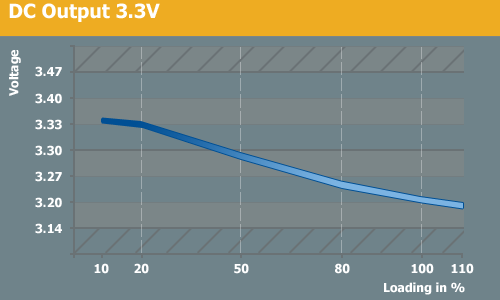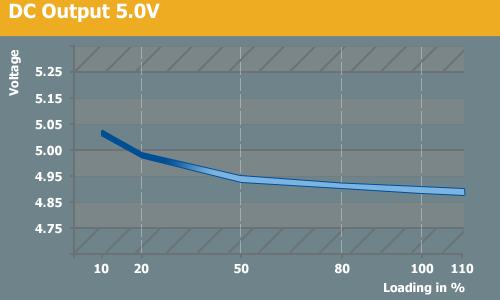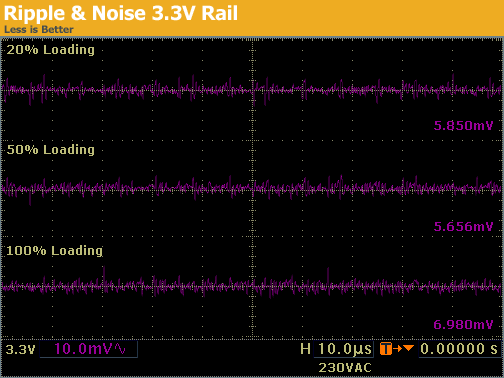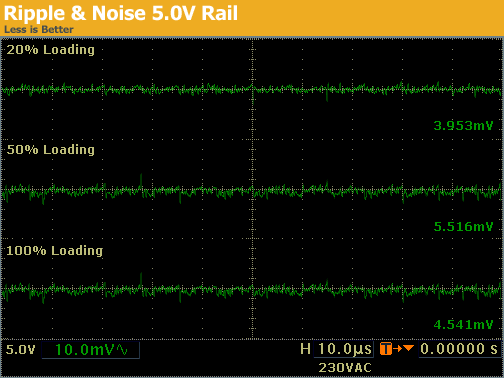Cooler Master Silent Pro PSUs
by Christoph Katzer on September 8, 2008 3:00 AM EST- Posted in
- Cases/Cooling/PSUs
DC Output, Stability, and Quality




The lower voltage rails do not perform as well as the more important 12V rail. The 3.3V rail drops pretty steadily as load increases, while the 5V rail experiences a large drop during the initial load ramp-up. From 50% load onwards the 5V rail does better and holds steady at around 4.95V. The 12V rail on the other hand is rock-solid stable and holds nicely at around 12.14V, with almost no drop at all during the load testing.



The output quality is well within specs on all rails. In fact, the output quality is exceptional, measuring only 9mV of ripple.










15 Comments
View All Comments
ryboto - Wednesday, September 17, 2008 - link
You're quite incorrect. The method for heat transfer from the heatsinks to the air is the same for both copper and aluminum. If you took a heat transfer course you'd know that the thermal conductivities and convective heat transfer coefficients are what is used in the heat transfer equations. No where is it dependent on the heat capacity. So, you haveQ=K A (Tb-Th) where Tb=base temp, Th= heatsink temp, then heat transfer to the air is
Qa=h A (Th-Ta) where Ta is the bulk air temp. These are highyl approximated, as there are multiple layers. Now, look at the equations...if K for Cu is greater than for Al, heat transfer is faster. What this amounts to is a greater Th, but look at the second equation, if Th is greater, the temperature gradient(or driving force for heat transfer) is greater than it would be for aluminum. Copper is a better material for this application. It's just expensive, and it oxidizes, which is why we have nickel plated copper heatpipes.
Megaknight - Tuesday, September 9, 2008 - link
Great explanation mate.Penti - Monday, September 8, 2008 - link
It's an old tale but it's just that a tale.Weight has probably a lot to do with it on modern coolers, I have a Tuniq Tower 120, think of this cooler in pure copper, it would snap the motherboard with it's weight probably. We haven't moved to coolers weighing 2-3 kg yet. But as always price is the main factor.
Aquila76 - Monday, September 8, 2008 - link
'Transfer' and 'dissipate' are different things. The copper plates transfer heat away from the components better; the aluminum fins dissipate (exchanges may have been a better word choice there) the heat into the air. This is not unlike those heatpipe tower-style CPU coolers.Christoph Katzer - Monday, September 8, 2008 - link
Thanks mate.